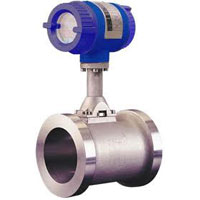
Flow Control Valves
Get Price Quote
Flow Control Valves that we offer regulate the flow or pressure of a fluid. Flow Control Valves, offered by us, normally respond to signals generated by independent devices such as flow meters or temperature gauges. Our Flow Control Valves are normally fitted with actuators and positioners. Pneumatically-actuated globe valves and diaphragm valves are widely used for control purposes in many industries, although quarter-turn types such as (modified) ball, gate and butterfly valves are also used.Flow Control Valves, offered by us, can also work with hydraulic actuators (also known as hydraulic pilots). These types of valves are also known as Automatic Control Valves. The hydraulic actuators will respond to changes of pressure or flow and will open/close the valve. Automatic Control Valves do not require an external power source, meaning that the fluid pressure is enough to open and close the valve. Automatic control valves include: pressure reducing valves, flow control valves, back-pressure sustaining valves, altitude valves, and relief valves. An altitude valve controls the level of a tank. The altitude valve will remain open while the tank is not full and it will close when the tanks reaches its maximum level. The opening and closing of the valve requires no external power source (electric, pneumatic, or man power), it is done automatically, hence its name.Process plants consist of hundreds, or even thousands, of control loops all networked together to produce a product to be offered for sale. Each of these control loops is designed to keep some important process variable such as pressure, flow, level, temperature, etc. within a required operating range to ensure the quality of the end product. Each of these loops receives and internally creates disturbances that detrimentally affect the process variable, and interaction from other loops in the network provides disturbances that influence the process variable. To reduce the effect of these load disturbances, sensors and transmitters collect information about the process variable and its relationship to some desired set point. A controller, then processes this information and decides what must be done to get the process variable back to where it should be after a load disturbance occurs. When all the measuring, comparing, and calculating are done, some type of final control element must implement the strategy selected by the controller. The most common final control element in the process control industries is the Flow Control Valve. Flow Control Valves manipulate a flowing fluid, such as gas, steam, water, or chemical compounds, to compensate for the load disturbance and keep the regulated process variable as close as possible to the desired set point.

steam valves & Traps
Get Price Quote
steam valves for steam application .
Best Deals from Control Valves

Control Valves
Get Price Quote
Actuators, Pumps, special alloy pipe fittings

Overflow Seat Valve
Get Price Quote
Overflow Seat Valve, ASI Control Unit Electrovalve, Inline Mixer

4 Way Solenoid Control Valve
Get Price Quote
4 Way Solenoid Control Valve, Hydraulic Radial Piston Motor

Inline Flow Control Valve
Get Price Quote
Inline Flow Control Valve, Grundfos Make Hot Water Pump